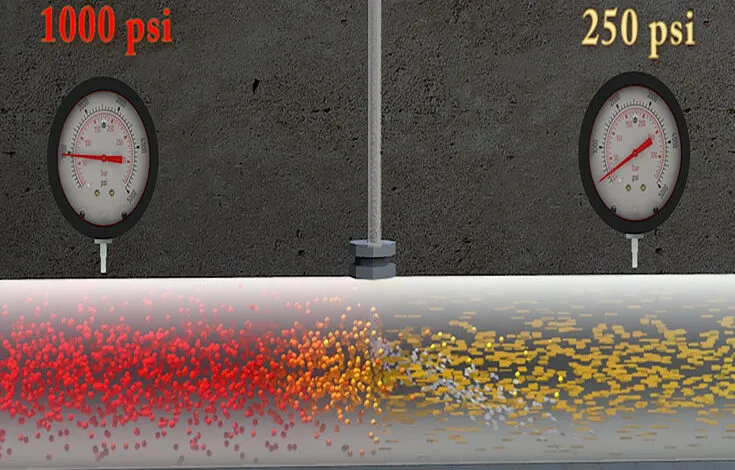Exploring the Benefits of Drag Reducers

Are you tired of dealing with the drag and resistance that slows down your operations? Well, it’s time to say goodbye to those frustrating obstacles! In today’s blog post, we are going to explore the incredible benefits of using drag reducers in various industries. Whether you’re involved in crude oil pipeline transportation or cementing additives, drag reducers can revolutionize your processes and maximize efficiency. So let’s dive in and discover how these remarkable agents work their magic, reducing drag and boosting productivity like never before!
How Drag Reducers Work
Drag reducers, also known as drag reducing agents (DRAs), are chemical additives that work wonders in minimizing the resistance and turbulence experienced during fluid flow. These remarkable substances are designed to be added to the fluid being transported, whether it’s crude oil or cement slurry.
When introduced into the pipeline or system, drag reducers act by altering the behavior of turbulent eddies. They essentially help in breaking down these eddies into smaller structures, which results in reduced energy losses due to friction. This reduction in frictional resistance allows for smoother and more efficient flow of fluids through pipelines.
The secret behind the effectiveness of drag reducers lies in their ability to modify the boundary layer surrounding flowing fluids. By doing so, they create a slippery surface within the pipeline walls that reduces contact with the liquid, thus minimizing frictional forces.
It’s fascinating how even a small dosage of drag reducer can have significant effects on overall efficiency. In fact, studies have shown that adding just a few parts per million (ppm) of these agents can lead to substantial decreases in pressure drop and power consumption.
Moreover, drag reducers offer benefits beyond improving flow efficiency. They also contribute to increased throughput capacity and decreased pumping requirements. Additionally, by reducing turbulence and velocity fluctuations within pipelines, they help mitigate wear and tear on equipment while extending its lifespan.
Drag reducers work by modifying turbulent eddies and creating a slippery surface along pipeline walls – resulting in reduced resistance during fluid flow. Their impressive capabilities go far beyond boosting efficiency; they enhance throughput capacity and reduce maintenance needs as well! Now let’s explore some specific benefits you can enjoy by incorporating these incredible agents into your operations!
Benefits of Using Drag Reducers
When it comes to transporting liquids through pipelines, drag can be a major concern. The resistance created by the flow of liquid can result in increased energy consumption and decreased efficiency. That’s where drag reducers come into play.
Drag reducers, also known as drag reducing agents, are additives that can significantly reduce the frictional resistance within pipelines. By modifying the flow behavior of liquids, these substances help streamline the transportation process and improve overall pipeline performance.
One of the key benefits of using drag reducers is their ability to increase throughput. With reduced frictional resistance, more fluid can be transported at a faster rate without requiring additional pumping power. This not only saves time but also reduces operational costs.
Another advantage is improved pump efficiency. Drag reducers minimize pressure drop along the pipeline, allowing pumps to work more efficiently and consume less energy. This results in cost savings and reduces environmental impact.
Additionally, drag reducers can extend the lifespan of pipelines by reducing wear and tear caused by turbulence and high velocities. By minimizing wall shear stress and erosion effects, these additives help maintain pipeline integrity over time.
Furthermore, using drag reducers promotes smoother flow patterns within pipelines which minimizes vibrations and noise levels associated with turbulent flows. This not only improves safety for workers but also reduces disturbances to nearby communities or environments.
Conclusion
Drag reducers are an essential tool in various industries such as crude oil transportation and cementing. These innovative additives work by reducing the frictional resistance between fluids and surfaces, ultimately improving efficiency and performance.
By effectively minimizing turbulence and optimizing flow rates, drag reducers help to increase throughput, reduce energy consumption, and decrease operational costs. They also contribute to a more sustainable future by promoting the efficient use of resources.
Whether it is in crude oil pipelines or during cementing operations, the benefits of using drag reducers are significant. With their ability to enhance fluid dynamics and improve overall system performance, these additives have become indispensable tools for many businesses.
So if you’re looking to optimize your operations and maximize productivity while reducing costs, consider incorporating drag reducers into your processes. By harnessing their power to streamline fluid flow and minimize resistance, you can take advantage of all the benefits that these remarkable substances have to offer.
Remember that choosing the right type of drag reducer is crucial for achieving optimal results. Consult with industry experts or trusted suppliers who specialize in providing high-quality products tailored to meet your specific needs.
Embrace this cutting-edge technology today and experience firsthand how drag reducers can revolutionize your operations!





